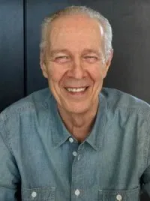.
.
Fotopersbureau De Boer, CC0, via Wikimedia Commons
Drummer Art Blakey and his Jazz Messengers were an essential part of the foundation of hard bop. He is pictured in the Kurzaal Concert Hall in The Hague, The Netherlands; March 30, 1963.
.
___
.
…..I am blessed by a strong connection to friends who are as enamored by jazz music and its history as I am. One of the ways we celebrate this interest is by participating in a five-member “Jazz Listening Group.” Each month my friends and I choose a topic of study that we devote much of our listening hours to – last month it was a short history of bebop; the month before was Charles Mingus; and before that, the compositions of Wayne Shorter. This group has been meeting in person (or via Zoom) since 2017, so the learning and fun in doing so is ongoing.
…..This month’s topic is hard bop, described by Gary Giddins and Scott DeVeaux in their 2009 history of jazz, Jazz, as “the most profound counterstatement to cool jazz” that was “essentially a revival of bop with a harder edge.” It was “born largely of musicians who came to New York from the nation’s inner cities, especially Detroit and Philadelphia, hard bop was said to reflect the intensity and hustling tempo of city life.” Its sound was “heavy, dark, impassioned.” Its key players included Miles Davis, Art Blakey, Horace Silver, Hank Mobley, Kenny Dorham, Lee Morgan, Freddie Hubbard, Clifford Brown, J.J. Johnson, Cannonball Adderley, Jack McLean, Sonny Rollins, Johnny Griffin, and Joe Henderson.
…..One of our group’s members is Bob Hecht, a frequent contributor to Jerry Jazz Musician whose love of listening to jazz music is only matched by his vast knowledge of it. A key component of his passion for jazz is his penchant for creating comprehensive Spotify playlists devoted to our topic. I received the current list the other day, and thought readers would enjoy it as well.
…..Bob introduces the playlist…
.
___
.
…..Pianist George Colligan once wrote in his blog, jazz truth, the following:
…..“One of the hip things about the Hard Bop era is the efforts to return to the roots of the music (blues, gospel, danceable rhythms) in order to have a wider appeal, and YET, the great Hard Bop composers like Lee Morgan, Horace Silver, Wayne Shorter, and Benny Golson never stopped creating their own music. What if they had only played jazz standards? We would be missing a HUGE body of work.”
…..That, obviously is indisputable, and it is where the uniqueness and greatest creativity lies in the hard bop genre. Without “The Sidewinder,” “Sister Sadie,”, “Moanin’,” “Nica’s Dream,” “This I Dig of You” and all the rest, we would not be paying the same attention to this great body of work.
…..And yet, as I immerse myself in this music, I’ve also been aware that those musicians never entirely turned their backs on the other great body of material—standard tunes. Most of the classic hard bop albums also included such material, and when they did, they brought to bear the same qualities—hard driving drumming, snappy, finger-popping arrangements – an overall “Black” and “hard bop” conception of these tunes. Blakey’s version of “Moon River,” for example, is a far cry from the insipidity of Henry Mancini’s or Andy Williams’! (In fact, it contains the ‘cry’ of jazz as well as its driving rhythms.)
…..The hard boppers didn’t include such material as throw-away numbers or as token nods to white fans or Black moldy figs. They dug these tunes for the great melodies and great vehicles for improvisation they are, and they dug into them with the same passion and unique approaches as they did to “Jeannine” or “Fungii Mama.” And they didn’t simply use their harmonic frameworks as springboards—as, for example, so many boppers used “I Got Rhythm.” They transformed them. Into hard bop. Blakey’s rendition of “Come Rain or Come Shine” is a case in point—it has been transformed from a smooth ballad to a choppy, back beat, drum-driven, passion-filled exploration no different, say, than “Are You Real” from the same album. It’s treated as of a piece with the rest of their material.
…..And so, as I delve into Hard Bop afresh (after having lived and breathed the genre since its inception in the fifties), one spin I am putting on it today is to listen to how these players addressed and enlivened—and reinvented—the standard tunes from the so-called Great American Songbook, along with other popular songs of the day.
…..Here’s a new Spotify playlist to check out from this angle…
.
.
.
___
.
.
.

Bob Hecht frequently contributes his essays, photographs, interviews, playlists and personal stories to Jerry Jazz Musician. He has a long history of producing and hosting jazz radio programs; his former podcast series, The Joys of Jazz, was the 2019 Silver Medal winner in the New York Festivals Radio Awards.
.
.
___
.
.
Click here to subscribe to the quarterly Jerry Jazz Musician newsletter
.
.
.

































